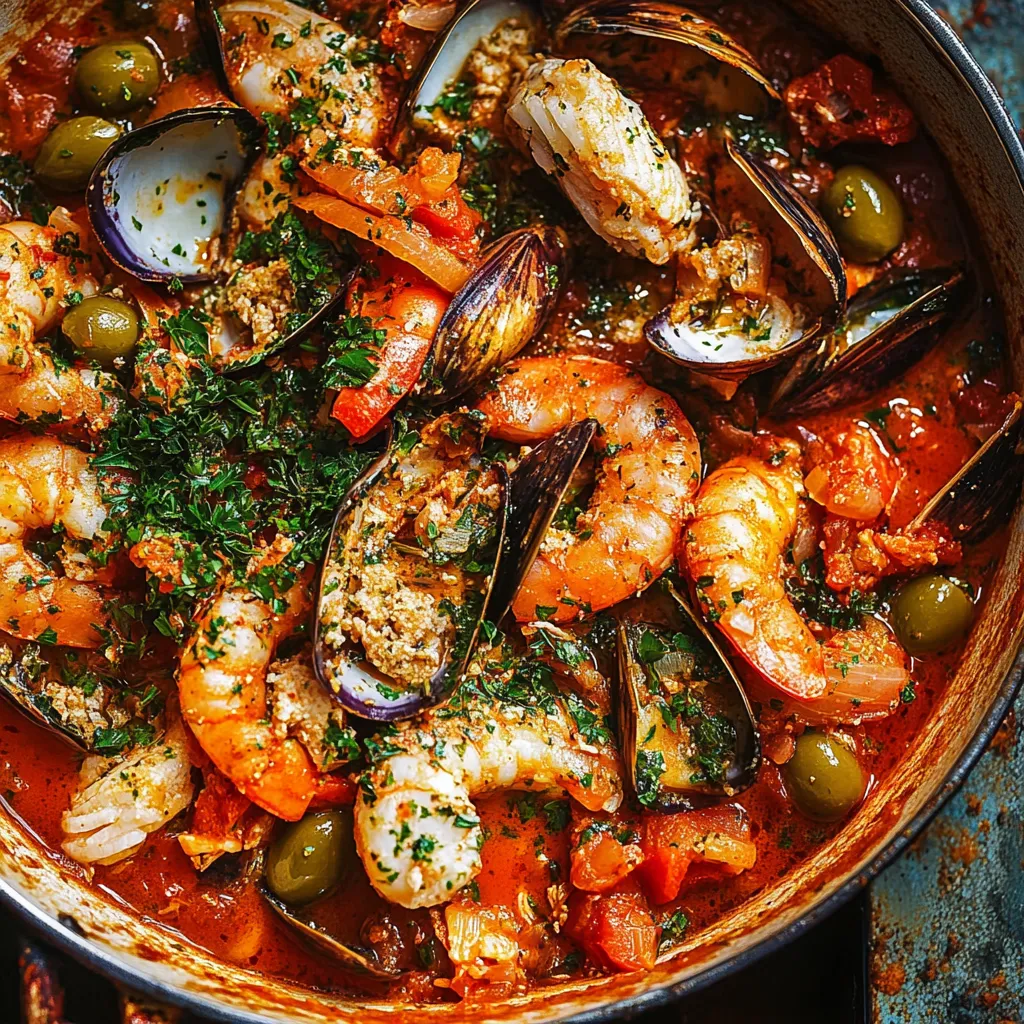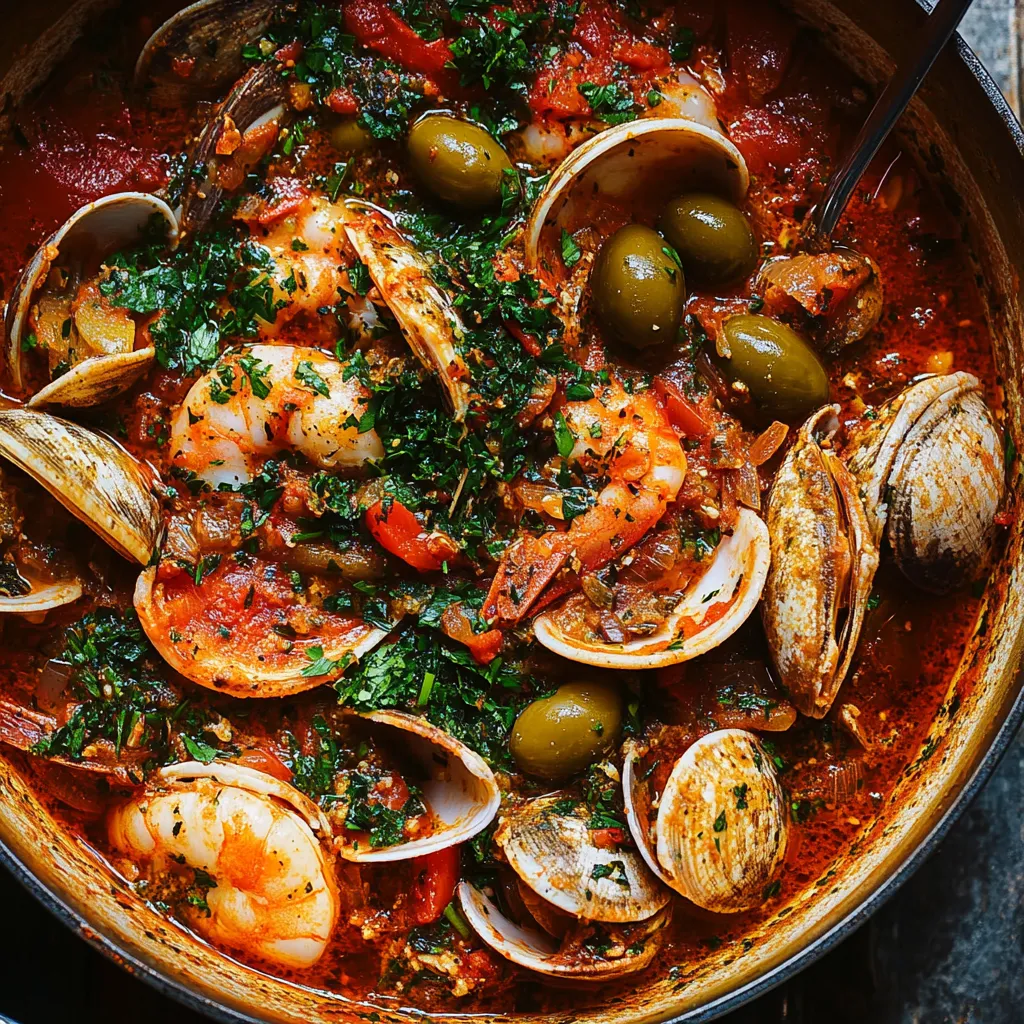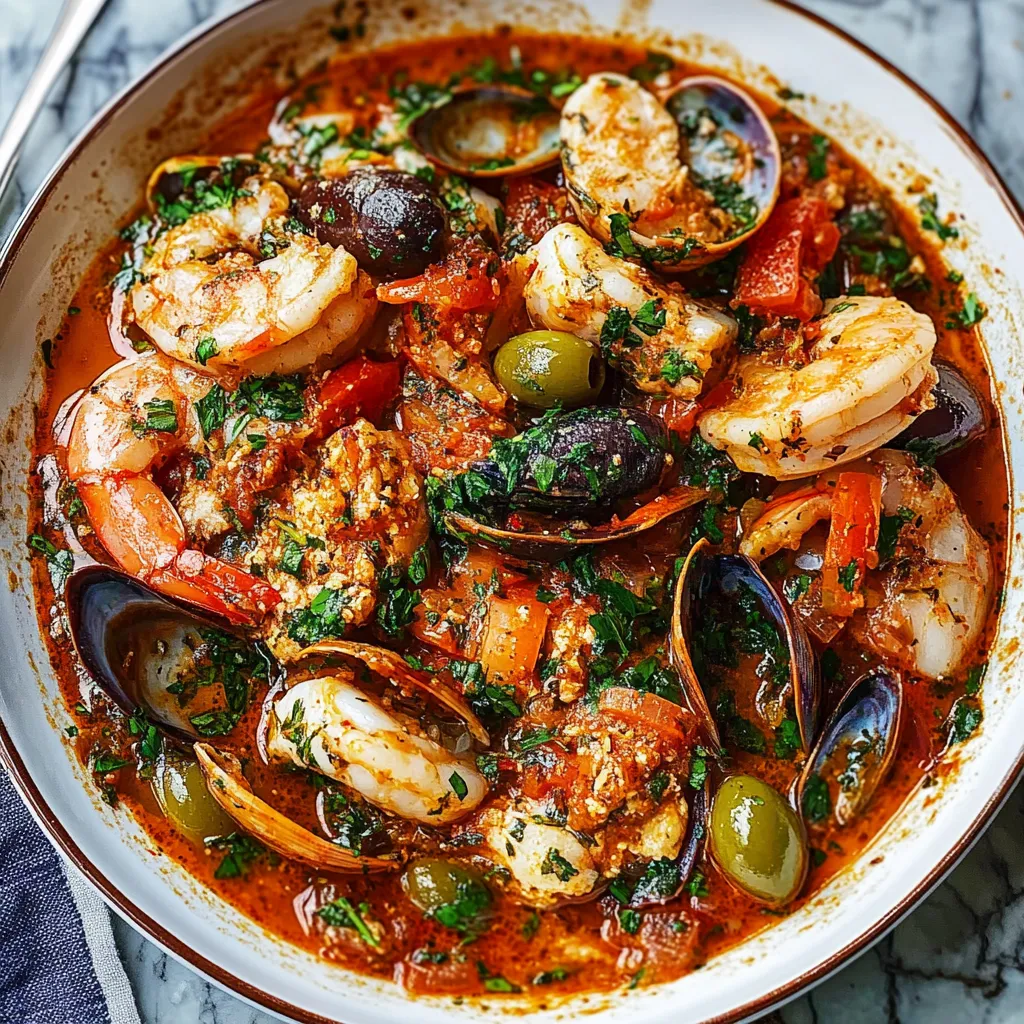 Pin it
Pin it
This hearty seafood medley combines a vibrant tomato base with an ocean bounty for an unforgettable meal. The Bay Area favorite blends delicate fish, plump shrimp and briny mollusks in a fragrant wine-infused liquid that captures seaside magic. Every bite delivers a wonderful mix of herbs and maritime flavors that'll make you feel like you're dining at San Francisco's bustling Fisherman's Wharf.
I first tried this dish while exploring San Francisco's Italian district, where local fishermen would share their catch and kitchen tricks. It's now become our family's Christmas Eve tradition, with everyone pitching in to clean and prep the seafood together.
Key Ingredients Breakdown
- Fresh seafood (1 lb each of clams, mussels, firm white fish, and shrimp): the quality really makes or breaks this dish
- Fennel bulb (1 large): delivers that signature anise-like aroma
- Whole canned tomatoes (28 oz): try to get San Marzano for their natural sweetness
- Dry white wine (1¼ cups): pick something you'd happily drink, skip the bottom shelf stuff
- Seafood stock (1¼ cups): making your own is amazing but good store options work too
- Fresh garlic (2 cloves): gives essential flavor to the base
Crafting Your Delicious Cioppino
- Step 1: Starting Your Base
- Warm olive oil in a big Dutch oven over medium heat. Toss in your chopped onions and fennel with a bit of salt, and let them cook till they're soft and smell amazing. Don't rush this part - it'll take about 8-10 minutes. Then add your chopped garlic and roasted peppers and let their scents fill your kitchen.
- Step 2: Creating The Liquid
- Add your white wine and scrape the pot bottom to get all those tasty brown bits. Let the wine cook down by half before dumping in your hand-squished tomatoes and stock. Let everything bubble gently so the flavors can mix and the liquid can thicken up a bit.
- Step 3: Getting Seafood Ready
- While your base bubbles away, rinse your shellfish well under cold water. Cook clams and mussels on their own until they barely open, and save that tasty liquid they release. Cut your fish into even chunks and peel your shrimp carefully.
- Step 4: Putting It All Together
- Start by adding your white fish and shrimp first since they need just a little time to cook. When they're almost done, add your pre-cooked shellfish just to warm them up. The trick is timing - each seafood type should stay tender and juicy.
- Step 5: Dishing It Up
- Scoop into warmed bowls, making sure everyone gets a good mix of all the seafood types. Serve right away with some toasted sourdough bread for soaking up all that amazing broth.
 Pin it
Pin it
My nonna always told me the magic of good cioppino comes from the order you add things. "Give each fish the respect it needs," she'd remind me, "and your dish will turn out wonderful."
Smart Seafood Picking
Look for seafood that smells clean like the ocean, not overly fishy. Combine different textures and tastes for the most interesting meal. Always buy from someone you trust who knows their seafood.
Getting The Broth Just Right
Your broth should taste deep but stay light, with tomato, wine and ocean flavors all playing nicely together. If it tastes too sour, a tiny bit of sugar helps. If it's too watery, let it simmer longer before adding your seafood.
Keeping It Fresh
It's tastiest right after cooking, but you can make the liquid a day early. Keep your seafood separate until you're ready to eat. Any leftover broth works great as a starter for other fish dishes.
 Pin it
Pin it
From many years of cooking this dish, I've found that taking your time with the broth and treating each seafood type right makes all the difference. Whenever I bring this to the table, watching friends soak bread in that flavorful liquid reminds me why this rustic fisherman's stew has stuck around for generations.
Frequently Asked Questions
- → How do I prep mussels and clams?
- Scrub the shells under cold water, pulling off the mussels' beards. Toss any that are already open or have cracks.
- → Can I cook this in advance?
- Make the broth ahead of time, but wait to add the seafood until you're ready to serve so it stays tender.
- → What type of white wine should I pick?
- Go for dry wines like Sauvignon Blanc or Pinot Grigio that you'd enjoy drinking. Avoid anything sweet.
- → Is frozen seafood okay to use?
- Frozen works if fresh isn't available. Remember to fully thaw and pat it dry before cooking.
- → What can replace seafood stock?
- Try fish or clam juice. If those aren't handy, chicken stock with a bit of clam juice can work in a pinch.
